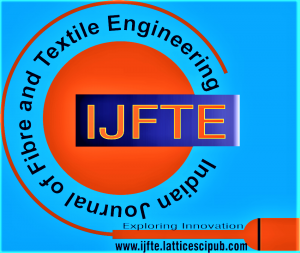![]()
Analyzing Harmony of Batik and Woven Printing Fabric With 3d Sleeves Design in Party Dress
Lilik Masruroh Hidayah1, Ferina Suci Adiningtyas2
1Lilik Masruroh Hidayah, Department of Fashion, universitas negeri Yogyakarta, Indonesia.
2Ferina Suci Adiningtyas, Department of Fashion, universitas negeri Yogyakarta, Indonesia.
Manuscript received on 05 October 2024 | Revised Manuscript received on 12 November 2024 | Manuscript Accepted on 15 November 2024 | Manuscript published on 30 November 2024 | PP: 18-22 | Volume-4 Issue-2, November 2024 | Retrieval Number: 100.1/ijfte.A241505010525 | DOI: 10.54105/ijfte.A2415.04021124
Open Access | Editorial and Publishing Policies | Cite | Zenodo | OJS | Indexing and Abstracting
© The Authors. Published by Lattice Science Publication (LSP). This is an open-access article under the CC-BY-NC-ND license (http://creativecommons.org/licenses/by-nc-nd/4.0/)
Abstract: Woven motifs are proof of the richness of Indonesian traditions. The woven motif emerged because of the art of weaving bamboo into craft items. Woven bamboo crafts will produce different results. All the motifs that appear depend on the shape of the bamboo weave. Batik is a handicraft made from white cloth on which the maker’s desired pattern is drawn. Several special processes mean that batik cloth has various motifs and colors. On the other hand, pattern-making innovation is increasingly developing and follows designer inspiration. Inspired by the sea and the biodiversity it contains as for the sleeves, the author felt challenged to combine fabric with 3D woven motifs and batik with the addition of innovative shell sleeve patterns. This research aims to analyze how well the assessment of the feasibility of combining 3D patterned fabric, Yogyakarta batik, and the results of the innovation of sleeve patterns is assessed. The research method used is research and development, where the author will carry out several experiments and also test the feasibility of experts and population samples. From the results of the feasibility test, it was concluded that the independent variables had a simultaneous effect. Separately, the role of each variable is that the design variable has an influence of 17%, the color variable has an influence of 84.3%, the fabric placement variable has an influence of 3.6% and the fabric finishing variable has an influence of 11.1%.
Keywords: Innovation, Broken Patterns, 3d Woven, Batik, Cocktail Party Dress.
Scope of the Article: Textile Processing and Manufacturing
